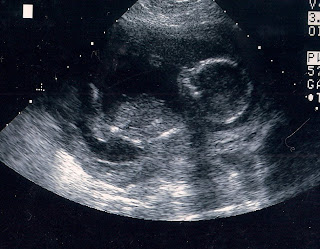The Mayo Clinic Scientific Press suite of publications is now available on Oxford Medicine Online. To highlight some of the great resources, we’ve pulled together some interesting facts about anesthesia from James Hebl and Robert Lennon’s Mayo Clinic Atlas of Regional Anesthesia and Ultrasound-Guided Nerve Blockade. Get free access to the Mayo Clinic suite for a limited time with this Facebook offer (watch out, it closes today!).
(1) Egyptian pictographs dating back to 3000 BC showing a physician compressing a nerve in the antecubital fossa while an operation is being performed on the hand.
(2) William Halsted, M.D. (1852–1922; Chair, Department of Surgery, Johns Hopkins Hospital), used cocaine as local infiltration as he dissected down toward major nerve trunks. He then injected cocaine around them, performing regional blockade under direct vision.
(3) In Paris in the early 1920s, a new technique for blocking the brachial plexus from an axillary approach was introduced. M. Reding, M.D., studying the anatomy of the axilla, discovered that the nerves of the plexus surround the artery in a fascial sheath. Thus, using the artery as a landmark, Reding found that the fascial compartment could be filled with local anesthetic to result in brachial plexus blockade. Reding blocked the musculocutaneous nerve, which lay outside the sheath, by infiltrating the coracobrachialis muscle.
(4) Paresthesia technique—the long-preferred method of regional anesthesiologists—was slowly replaced during the 1980s as peripheral nerve stimulation began to emerge. During its development, peripheral nerve stimulation was thought to provide superior localization of neural structures compared with blind paresthesia-seeking techniques. Peripheral nerve stimulators transmit a small electric current through a stimulating needle that, when in proximity to neural structures, causes depolarization and muscle contraction.
(5) In contemporary medical practice, regional anesthetic techniques have expanding socioeconomic and clinical implications. For example, studies evaluating patient satisfaction have found that perioperative analgesia and the avoidance of nausea and vomiting are consistently two of the highest concerns among patients.
(6) Ultrasound guidance may represent the 21st century’s version of Halsted’s anatomical dissection down to the brachial plexus.
Mayo Clinic Atlas of Regional Anesthesia and Ultrasound-Guided Nerve Blockade by James Hebl and Robert Lennon is a practical guide for residents-in-training and clinicians to gain greater familiarity with regional anesthesia and acute pain management to the upper and lower extremity. It emphasizes the importance of a detailed knowledge of applied anatomy to safely and successfully performing regional anesthesia. It also provides and overview of the emerging field of ultrasound-guided regional anesthesia, which allows reliable identification of both normal and variant anatomy. Mayo Clinic Atlas of Regional Anesthesia and Ultrasound-Guided Nerve Blockade contains more than 200 beautifully illustrated anatomic images important to understanding and performing regional anesthesia. Corresponding ultrasound images are provided when applicable.
The Mayo Clinic Scientific Press suite of publications is now available on Oxford Medicine Online. With full-text titles from Mayo Clinic clinicians and a bank of 3,000 multiple-choice questions, Mayo Clinic Toolkit provides a single location for residents, fellows, and practicing clinicians to undertake the self-testing necessary to prepare for, and pass, the Boards and remain up-to-date. Oxford Medicine Online is an interconnected collection of over 250 online medical resources which cover every stage in a medical career, for medical students and junior doctors, to resources for senior doctors and consultants. Oxford Medicine Online has relaunched with a brand new look and feel and enhanced functionality. Our aim is to ensure that the site continues to deliver the highest quality Oxford content whilst meeting the requirements of the busy student, doctor, or health professional working in a digital world.
Subscribe to the OUPblog via email or RSS.
Subscribe to only health and medicine articles on the OUPblog via email or RSS.
The post Six facts about regional anesthesia appeared first on OUPblog.






OOOOOh - how lovely!
congratulations. SUch a precious picture!
You've been busy creating life! :) Congratulations - he/she looks perfect.
Baby looks so perfect! Congradulations!
thank you everyone. I promise not to turn my blog into a "pregnancy" blog and hope to have some art posted really soon. Cheers!
Congratulations! You have a wonderful reason to be happy, celebrate and share. So what if you have more pregnancy/baby stuff on your blog? Your whole life will be more about the new baby real soon anyway. Enjoy this wonderful time!
Thanks Edrian. You're right. :)
Congratulations!! The baby looks so cute.
Ah! How beautiful!
It's baby season! Congrats again Crystal! We all have no doubt that you're going to be an excellent mother!
Hey Crystal, I stumbled upon your site and saw your ultrasound, congrats! I went to school with you before I got married (Kim malaryk.) I have a little girl who's 14 months and its pretty fun.
You're doing fantastic work and I'm glad you've kept up with illustrating. Best wishes with your work and the babe on the way!
Congratulations on your news! I have not dropped by for a while and had not heard the great news! I also read your review on your freelancing career and you should be very proud of yourself for your wonderful achievements.